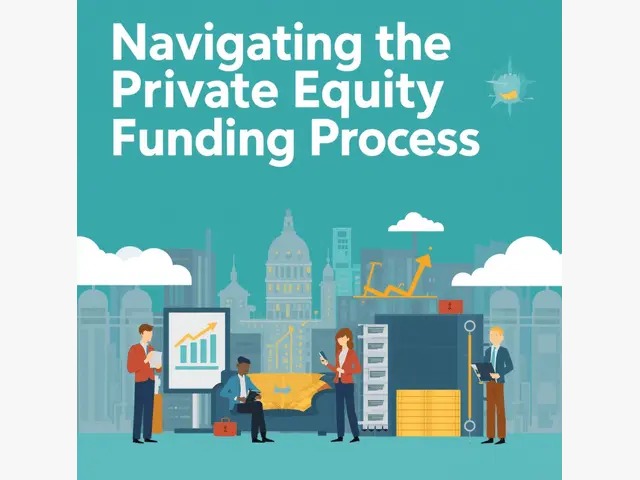Navigating the Private Equity Funding Process in an Investment Bank

For owners and promoters of successful, growing companies, seeking private capital often feels like a complicated and crucial process. You know your firm has tremendous potential, but turning that potential into a successful partnership with a Private Equity (PE) investor demands a clear strategy, not just strong performance.
This is the central promise of a specialized Boutique Investment Bank. It involves a step-by-step approach designed to boost your company's value, manage its presentation to the market, and guarantee long-term alignment with a new investor. Our Investment Banking experts explain this proven journey, from the initial planning stages to securing the necessary funds.
Phase I: Planning the Transaction and Defining Value
1. The Mandate
Every successful private equity deal starts by clearly defining a goal. The company, guided by an Investment Bank, must decide precisely what it wants to achieve: Is it raising capital for expansion, selling a portion of the company, or planning a full merger or sale?
This clear direction is formally captured in a mandate letter. This document ensures the promoter, management, and the investment bank are fully aligned on roles, timelines, and the ideal investor profile. This upfront agreement is vital, ensuring the process is focused on the company's long-term value creation, not just a quick cash injection.
2. Valuation and Structure
Determining your company's worth, or Valuation, is the foundation of any transaction. A skilled investment banker uses rigorous financial analysis combined with real-time market knowledge to arrive at a fair and defensible value range.
We determine the basis of valuation using several standard approaches, including:
- Discounted Cash Flow (DCF): Estimating value based on how much cash the company is expected to generate in the future.
- Comparable Company Analysis (CCA): Benchmarking against the values of similar public companies in the same industry.
- Precedent Transactions (PTA): Looking at the price paid for similar companies in recent mergers and acquisitions (M&A).
The final valuation figure is more than just a spreadsheet result; it is also influenced by industry outlook and how well the company aligns with major investor trends, such as deep-tech or sustainability. In fact, reports confirm that India has seen significant mid-market growth investments, proving that the opportunity for well-prepared companies is strong.
Once the valuation is clear, the focus shifts to Deal Structuring. This means deciding on the best type of capital to raise—such as common shares or preferred shares—to balance the new investor’s returns with the promoter’s continued control and operational freedom. A smart structure significantly impacts the partnership's success.
Phase II: Attracting Partners and Negotiating Terms
3. Investor Outreach
With the groundwork laid, the Investment Bank begins presenting the company's compelling story to the market. This phase goes beyond simple marketing; it is a focused campaign to find the perfect strategic partner.
The main document used, often called an Information Memorandum (IM), details the business model, financial results, management team quality, and the value creation plan. This step outlines how Investor Outreach is done by finding investors who are truly the right fit.
The Investment Bank identifies and contacts a select group of potential investors, including dedicated private equity funds and family offices, who have a track record of investing in companies of the client's size and sector. Effective outreach relies on:
- Targeted Search: Focusing on PE funds with available funds and proven sector experience.
- Clear Messaging: Ensuring the company’s story is transparent, consistent, and appealing across all presentations.
- Managing Due Diligence: Guiding the investor through the verification phase in an organized, timely manner to build trust. Analysing the company through and through, from their bookkeeping to client records to order books, to understand the company better and enhance investors’ sense of clarity.
4. Term Sheets and Negotiation
When a serious investor expresses interest, they issue a Term Sheet, and the process moves into the critical negotiation game in equity. While the purchase price attracts the most attention, the most defining aspects of the partnership are found in the detailed clauses covering governance and rights.
The Investment Bank acts as an essential transaction advisor here. They help the promoter navigate complex issues like board composition, special rights for the investor, how the founders are incentivized, and plans for the eventual exit. Key elements under negotiation include:
- Partnership Safeguards: Rights investors use to protect their capital and influence.
- Governance: Determining the new balance of power in future strategic decisions.
- Exit Strategy: Planning the pre-agreed methods for the investor to eventually sell their stake.
The banker’s main job is to broker a balanced agreement that protects the promoter’s long-term vision while meeting the institutional investor’s requirements for a strong return, leading to a successful, aligned partnership.
Phase III: Finalizing the Deal and Sustaining Growth
5. Closure and Compliance
The final phase involves legally documenting the deal, turning the agreed-upon Term Sheet into a legally binding contract. This execution stage demands extreme focus on detailed paperwork and regulatory adherence.
The importance of Compliance in Equity is paramount, especially in a regulated market. Legal teams draw up final agreements, the investor completes their final due diligence and finalises the Shareholder’s Agreement (SHA)& Shareholders Share Subscription Agreement (SSA), and all required documents are filed with government & regulatory authorities and signed by involved parties to finalise and seal the deal. Accuracy is key, as small compliance errors can significantly delay the final closure.
6. Beyond the Deal: Strategic Partnership
Closing the transaction is a milestone, not an end. A good Boutique Investment Bank continues to provide advice after the deal is done, offering crucial support in areas like new board governance, investor communication, and long-term strategic planning.
Maintaining a relationship with a trusted Investment Bank ensures a company is positioned for ongoing success. It facilitates future funding rounds, supports strategic acquisitions (bolt-ons), and prepares the company for a maximum-value exit later on—a true demonstration of partnership and sustained value creation..
.webp)

.png)



.webp)
.png)

.png)






